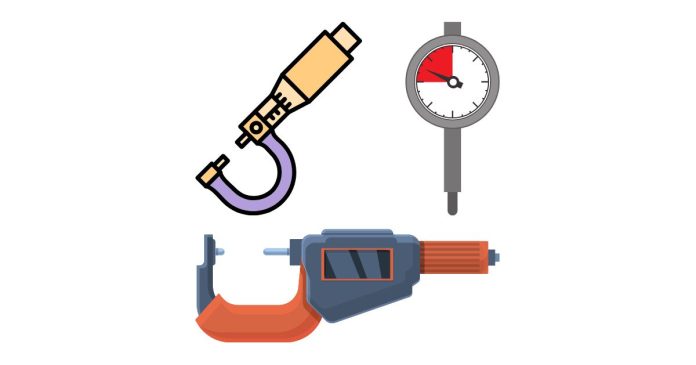When it comes to precision measurement tools, the micrometer screw gauge is one of the most widely used devices for measuring the thickness or diameter of small objects, typically in the range of a few millimeters or micrometers. One essential concept to understand when working with a micrometer screw gauge is pitch. But what exactly does pitch mean in the context of this tool, and how does it affect the accuracy of your measurements? Let’s break it down.
What is a Micrometer Screw Gauge?
Before diving into pitch, it’s important to have a basic understanding of what a micrometer screw gauge is and how it functions. A micrometer screw gauge is a device used to measure the outer dimensions (typically diameter or thickness) of small objects with great precision. It works on the principle of a screw thread, which provides a mechanical advantage to measure very small dimensions.
The micrometer consists of a U-shaped frame, a spindle, and an anvil. When you rotate the micrometer’s thimble, the spindle moves toward the object being measured, pressing it between the anvil and the spindle. The measurement is then read from the scale on the thimble and sleeve.
What is Pitch in a Micrometer Screw Gauge?
Pitch in a micrometer screw gauge refers to the distance moved by the spindle in one complete rotation of the screw. In other words, it is the linear distance the spindle moves forward or backward when the thimble is rotated by one full turn. This movement is critical because it determines how fine or coarse the measurements will be.
The pitch of the screw gauge helps establish the measurement accuracy. A smaller pitch results in finer adjustments, providing higher precision. The pitch is generally engraved or specified on the micrometer and can vary depending on the design and intended use of the tool.
How Does Pitch Affect Measurements?
The pitch of the micrometer screw gauge directly influences the accuracy and resolution of your measurements. Here’s how it works:
- Fine Pitch (Small Pitch): If the pitch is small, it means that for each complete rotation of the thimble, the spindle moves a very small distance. This allows for very fine measurements and higher precision. For example, a micrometer with a pitch of 0.5 mm per rotation allows the user to measure small increments with great accuracy.
- Coarse Pitch (Large Pitch): A larger pitch means the spindle moves a larger distance per rotation of the thimble. This could be suitable for less precise measurements, or for measuring larger objects with less emphasis on extremely fine details.
The micrometer screw gauge typically has a pitch of around 0.5 mm or 1 mm, but specialized versions may have different pitches depending on their intended application.
The Role of Pitch in Calibration and Measurement
To get accurate readings, it’s important to ensure that the pitch is calibrated correctly. Micrometers are often designed with a scale that is synchronized with the pitch of the screw thread. When you rotate the thimble, the micrometer’s scale allows you to measure the exact distance between the spindle and the anvil.
When measuring an object, the user rotates the thimble to close the gap between the spindle and the anvil, carefully noting the reading on the scale. The smaller the pitch, the more precise the measurement can be because the user has more control over small increments of movement.
How to Read a Micrometer with Pitch
When using a micrometer screw gauge, you must understand how to read the scale based on the pitch. The reading is typically broken down into two parts:
- Main Scale: This scale shows the measurement in millimeters or inches, based on the micrometer’s design.
- Thimble Scale: The thimble scale is divided into smaller units (usually hundredths of a millimeter) based on the pitch. By rotating the thimble, you can measure to a finer degree of accuracy.
For instance, if the micrometer has a pitch of 0.5 mm, and you rotate the thimble, each increment on the thimble scale represents 0.01 mm or 1 micron. The micrometer can then give measurements with a resolution of 0.01 mm, allowing for extremely accurate readings.
In summary, pitch in a micrometer screw gauge refers to the distance the spindle moves for every complete turn of the screw. It plays a crucial role in determining the precision and accuracy of the measurements made with the tool. A fine pitch allows for highly accurate measurements, while a coarser pitch might be sufficient for larger or less detailed measurements. Understanding pitch is essential for properly using a micrometer and obtaining reliable, precise measurements.
Whether you’re using a micrometer for mechanical work, engineering tasks, or scientific experiments, having a good grasp of pitch will ensure you get the most accurate results from this indispensable precision tool.


